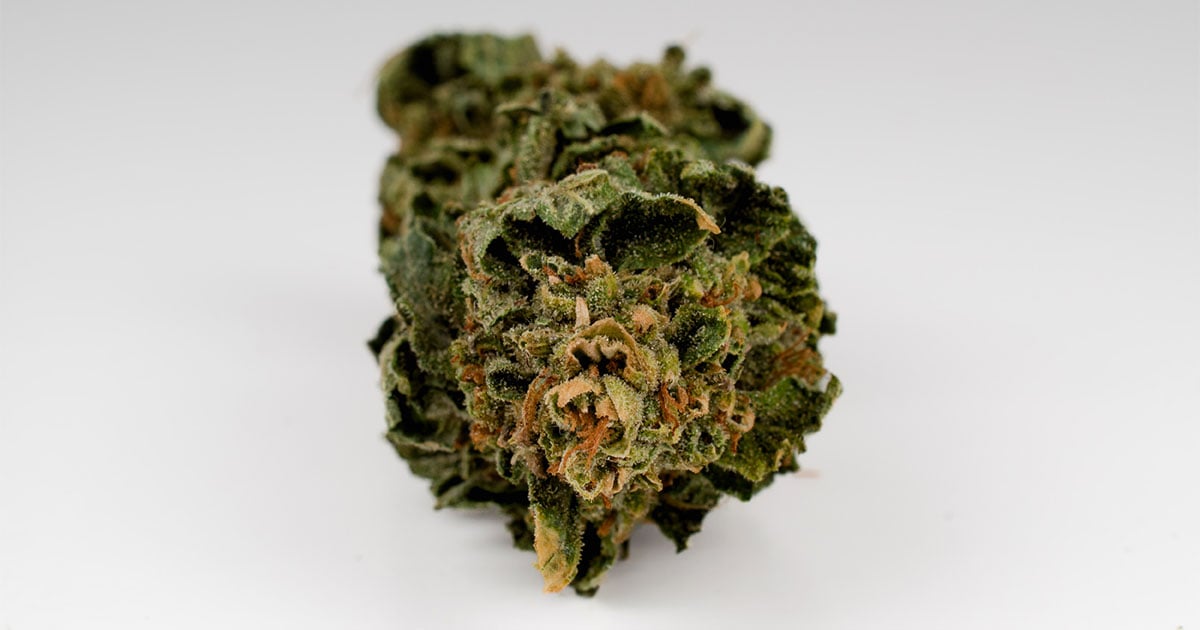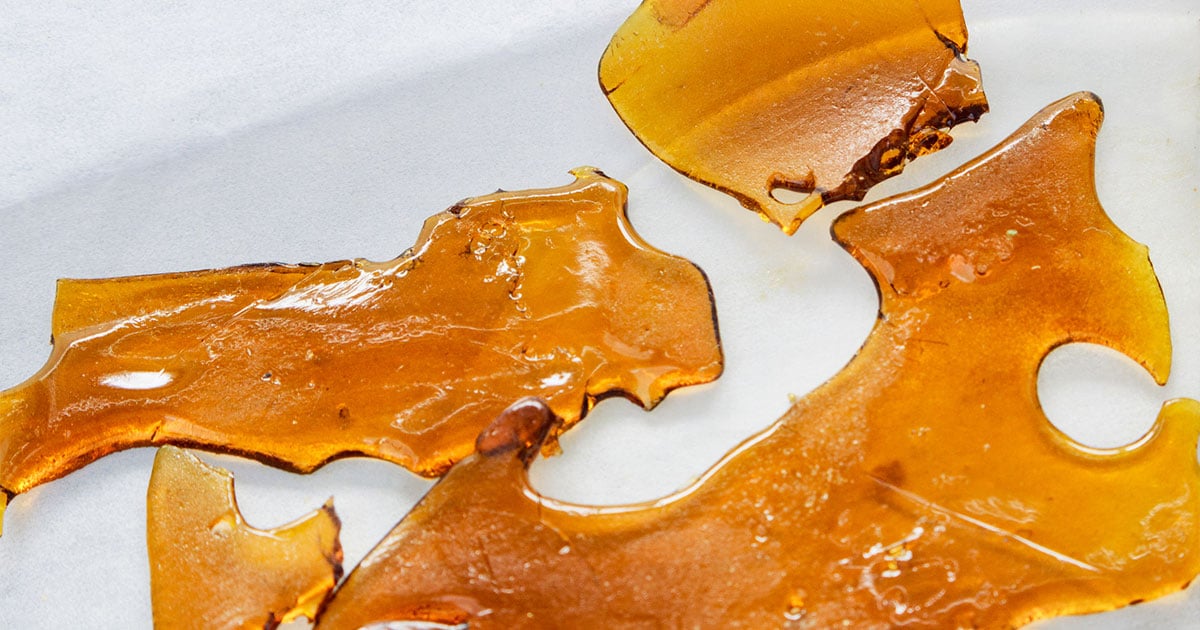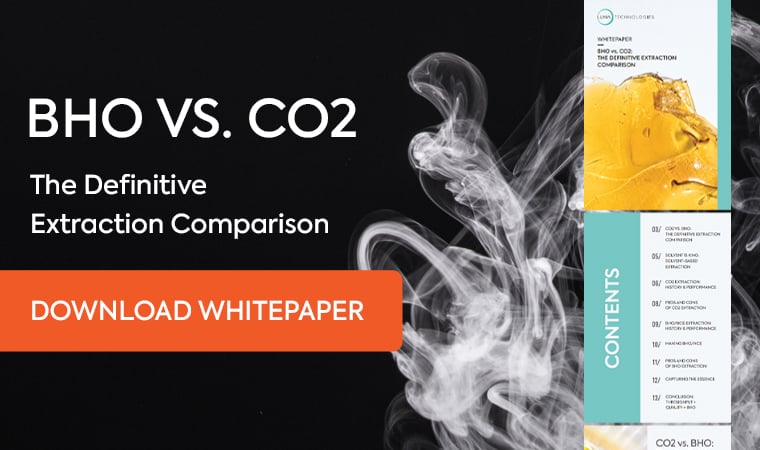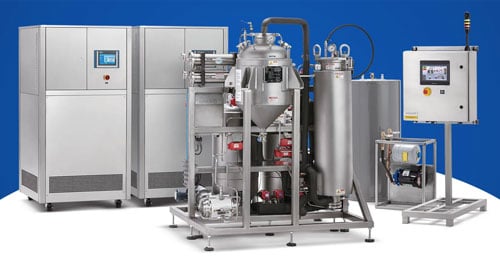
To keep up with the increased consumer demand for a wide variety of edibles, oils concentrate, and topicals, cannabis extraction technologies have grown by leaps and bounds in the past ten years. Fully automated solutions capable of producing high purity, potency, and flavor concentrate products at scale are not only the norm but a necessity for any extraction brands looking to dominate the marketplace.
Cannabis processing has many variables, including solvent type, state regulations and more. Here, we cover the most frequently asked questions about the cannabis extraction process and two of the most common methods used: ethanol and hydrocarbon/BHO extraction.
General Cannabis Extraction FAQ

1. How Fine Should You Mill Your Biomass?
Mill size of the cannabis plant matter can determine the quality of the resin from cannabis extractions. The right particle size can produce an extract with a desirable level of cannabinoids and terpenes while minimizing the amount of chlorophyll.
A powdery consistency can introduce undesirable compounds to your cannabis extract and increase the amount of time and labor needed to remove the contaminants. The particle size of cannabis plant material that is too large can reduce the extraction efficiencies of the closed-loop system.
Whether a processor uses cannabis flower (dried or fresh-frozen) or trims as their starting material, they will need to try different particle sizes to determine a suitable size based on their desired end product and solvent type.
After milling the plant material, processors can use the Luna biomass packer to evenly and seamlessly condense the biomass by up to 85%, reducing utility costs and storage space.
2. What Extraction Equipment Do You Need?
The type of cannabis extraction equipment needed for a processing business depends on the desired cannabis extract products, including cannabis concentrates, vape pens, live resin, infused products, tinctures, distillates, and more.
Other factors that determine the extraction equipment needed include market and competitive research and local processing regulations.
Cannabis operators can work with extraction equipment manufacturers to find processing solutions for their business, depending on the type of chemical or organic solvents used, such as ethanol, hydrocarbons, or supercritical carbon dioxide.
In addition to the closed-loop extraction system, cannabis processors may require a walk-in freezer, an inline color remediation column, a vacuum pump, an oven, and a rotary evaporator to efficiently extract cannabinoids and terpenes and remove impurities.
Explore Luna’s fully-automated and cutting-edge BHO and ethanol extraction systems.
Ethanol Extraction FAQ

3. What Is the Process of Ethanol Extraction?
Ethanol extraction technicians begin by applying the ethanol solvent to the biomass to strip the desired compounds. Then, processors can remove undesirable compounds through winterization and filtration to remove residual solvent from the final extract product.
To recover the solvent, the crude extract is placed under a vacuum (heat can be applied). The vacuum environment reduces the solvent’s boiling point to evaporate and recycle it for later use easily.
4. What Are the Pros and Cons of Ethanol Extraction?
Ethanol extraction is one of the most popular methods of extracting cannabidiol (CBD) from hemp plants. This processing method has a high throughput compared to BHO or supercritical fluid extraction (CO2) extractions and is best used for producing hemp isolates and distillates in large volumes.
On the downside, ethanol extraction can remove valuable terpenes from the biomass, reducing the flavor and aroma of the final extract product. Extraction technicians can reintroduce terpenes into the extract after distillation to improve the product’s palatability. Ethanol is also flammable and requires a C1D2 control room.
5. What Is the Best Ethanol for Cannabis Extraction?
Ethanol is a colorless and flammable liquid made from fermenting starches such as corn and potatoes. Processors can choose from a range of different ethanol grades. 200-proof ethanol contains 100% ethanol, while 190-proof alcohol contains 5% water and 95% ethanol.
Although pure, food-grade ethanol is the best for making infused cannabis products from hemp, it can be expensive. Avoid using denatured alcohol since it contains additional chemicals inside that may not be safe for human consumption.
6. What Are the Benefits of Cryogenic Ethanol Extraction?
Closed-loop technologies like Luna Technologies’ Elara ethanol system can operate down to -80º F. Undesirable compounds such as waxes and fats are not extracted in this cryogenic environment. Overall, cryogenic extraction can reduce or eliminate the need for post-processing.
BHO Extraction FAQ

7. What Is the Process of BHO Extraction?
BHO extraction involves applying a high-purity butane over the loaded biomass in the material tank. After the primary extraction, processors remove the solvent from the crude extract in a vacuum oven. Technicians may use dewaxing and color remediation processes to purify the extract. Processors may use a blend of propane and butane to extract more terpenes.
8. What Are the Pros and Cons of BHO Extraction?
Butane and propane extraction methods are two of the safest and most efficient extraction processes available. They can help produce a wide range of concentrates such as shatter, live resin, and diamonds, and they can also preserve more of the plant’s aromatic terpenes.
Hydrocarbon operations require a C1D1 control room. However, BHO systems are known to provide a lower throughput than ethanol, which can be a sacrifice for higher quality cannabis oil. In addition, fire restrictions and lower storage limits are required for BHO compared to ethanol.
9. Is BHO Extraction Safe?
Under the right operating conditions and with the proper safety measures, BHO extraction can be one of the safest and most efficient methods to use in the industry. In addition, using fully-automated equipment can altogether remove the technician from the extraction room.
BHO extraction may have gotten a bad rap due to open blasting explosions making headlines. Still, today’s state and local regulations ensure processing companies set up precautions and fail-safes that protect workers and consumers.
Luna’s state-of-the-art, fully automated solutions with built-in fail-safes reduce labor costs and improve safety by eliminating manual processes.
10. Why Are Hydrocarbons the Best for Full-Spectrum Extracts?
Full-spectrum extracts containing all of the plant's valuable compounds, not just THC and a small portion of the original terpenes, are the future. Butane and propane’s low boiling points make them the perfect liquid solvent blend for handling and preserving volatile compounds like terpenes and other heat-sensitive essential oils.
Luna Technologies’ closed-loop equipment uses low operating temperatures, allowing processors to create the most flavorful and cannabis-rich extracts possible.
Make Better Cannabis Extracts with Luna Technologies
Luna Technologies draws from aerospace, engineering, oil and gas, and pharmaceutical industries to create innovative extraction solutions for the cannabis industry. We have expanded beyond the original IO hydrocarbon extractor with the larger Oberon extractor and the Elara ethanol extractor.
Luna Technologies provides end-to-end extraction solutions, from the biomass packer for seamless loading to the inline CRC add-on to improve color remediation. Our fully automated equipment empowers operators to create the highest quality concentrate and derivative products possible.



